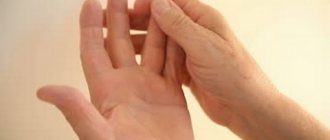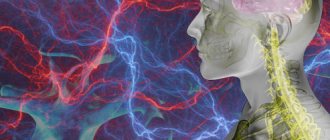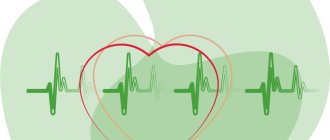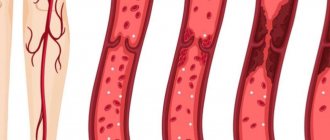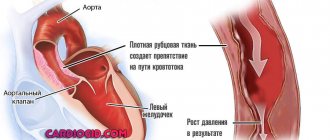Numbness of the fingers is a complete or partial loss of sensation in the entire hand or individual fingers, which can be on one or both hands. The correct name is hypoesthesia. This symptom occurs in many neurological disorders, but also occurs in healthy people.
Each peripheral nerve has a motor and a sensory part. Irritation or damage to sensory fibers of any nature - mechanical, tumor, inflammatory, autoimmune - causes a disorder in the form of numbness, burning, tingling.
At CELT you can get advice from a neurologist.
- Initial consultation – 3,500
- Repeated consultation – 2,300
Make an appointment
In a healthy person, numbness in the fingers of the hand – most often the right one – occurs due to constant overload of the hand muscles. This happens to pianists, hairdressers, programmers, and sometimes to massage therapists and cosmetologists. Sometimes the hands go numb during sleep, when a person lies on his side for a long time with his hand placed under his body. In all these cases, numbness is caused by a temporary disruption of blood flow in the arm due to mechanical compression of blood vessels and nerve trunks. Numbness is often accompanied by a burning sensation or a crawling sensation, but all this quickly passes after the limb returns to its normal physiological position.
Provoking factors
A completely healthy person rarely experiences numbness; they may indicate a hidden pathology in the form of:
- consequences of injuries;
- various diseases of the spinal column;
- joint inflammation;
- degenerative or destructive diseases of the cartilage and ligaments of the hand;
- nervous and mental disorders;
- persistent decrease in blood pressure;
- diseases of the endocrine glands.
There are currently no clear scales that determine the severity of hand numbness. If the unpleasant sensations bother you from time to time and go away after simple movements or rubbing, then you hardly need to worry. However, in case of frequent repetition of numbness, when it happens several times a week or the discomfort increases, you should consult a doctor as soon as possible, as this may be the beginning of the disease.
How to treat?
For numbness of the hands, there is a universal drug treatment (venotonics, B vitamins, vascular drugs), but in most cases it is not very effective.
The most effective is local (local) treatment:
- shock wave therapy - stimulates blood flow in the area of nerve compression;
- injection of an anti-inflammatory drug (Diprospan, Flosteron) into the area of nerve compression;
- electromyostimulation - with the development of muscle weakness.
All these types of treatment are actively used in the Clinic.
In rare cases, when the course is prolonged and conservative treatment is ineffective, surgical treatment is used.
Make an appointment
Or call us for a consultation
Advantages of treatment at the Professor Kinzersky Clinic
- Specialized care: we are one of the few clinics in the country that specializes in this problem, offering a comprehensive diagnostic and treatment program.
- Application in diagnostics of electromyography: this is a complex diagnostic technique that requires highly specialized education for a neurologist.
- Application of ultrasound of peripheral nerves in diagnostics: we are the first clinic in the Chelyabinsk region that performs these techniques; such a study can only be obtained at CITO (Central Research Institute of Traumatology and Orthopedics) in Moscow)
- Highly qualified doctors : three of our doctors studied at the specialized world congress on ultrasound of peripheral nerves IPSNI (International Society of Peripheral Neurophysiological Imaging)
- Unique capabilities of ultrasound navigation in treatment: Ultrasound navigation allows you to deliver anti-inflammatory drugs to the site of nerve compression as accurately as possible.
The course of treatment can be completed at a convenient time, without interruption from work.
The article was checked by Doctor of Medical Sciences, Professor Alexander Yuryevich Kinzersky
Diseases in which numbness of the hands is a symptom
These are conditions such as:
- rheumatic diseases of the joints of the fingers;
- osteochondrosis of the cervical spine, which also causes coordination problems, headaches, and limited movement of some muscles of the shoulder girdle, which is caused by bone growths or osteophytes;
- vertical and horizontal protrusions (hernias) of the intervertebral disc;
- thrombosis of blood vessels of the hand or finger;
- multiple sclerosis, in which the myelin sheath of the nerve is destroyed and the central nervous system is affected;
- carpal tunnel syndrome or another type of tunnel syndrome, when a nerve is compressed in a bone or muscle-ligamentous tunnel;
- metabolic disorders caused by diabetes mellitus;
- anemia or anemia, when tissues lack oxygen;
- inflammation of the brachial nerve plexus;
- various inflammatory processes of hand tissues, aseptic or purulent;
- amyotrophic lateral sclerosis or ALS, when at the onset of the disease some patients interpret increasing weakness in the arm as “numbness”
- disturbance of blood flow in the brain - in fairness, it must be said that in this case, movements, vision, speech are also most often impaired, but this is also one of the common reasons why the fingers suddenly go numb;
- Raynaud's syndrome, developing as a result of vibration or genetically determined, when numbness is accompanied by pallor, turning into cyanosis, and then into redness of the skin of the hand
- alcohol intoxication, in which the hands become numb like “gloves”, which is caused by damage to the peripheral nerves;
- diphtheria, which, thanks to universal vaccination, occurs easily and in an erased form; one of the manifestations may be polyneuropathy.
Numbness of the fingers may be the reason for a clinical examination, which will eventually reveal the truth. Modern diagnostic equipment makes it possible to give a preliminary conclusion already during the first day of the examination, or at least significantly narrow the range of the diagnostic search.
Numbness of each finger has its own characteristics. Since the branches of three main nerves are responsible for the innervation of the skin of the hand.
How to determine the true cause?
Initially, a patient with numbness of the finger is examined by a neurologist and, based on the clinical picture, determines the necessary list of examinations.
“
The Clinic of Professor Kinzersky has an extensive diagnostic base in all possible areas to quickly and accurately determine a patient’s diagnosis.
“
The gold standard for most carpal tunnel syndromes is electromyography (EMG). Based on the results of the study, the doctor determines how much the function of a particular nerve is reduced.
Ultrasound of peripheral nerves is used to assess structural changes in nerves .
elastometry technology on the AIXPLORER V6 ultrasound device made it possible to measure the pressure in the tunnel area (it is significantly increased compared to the norm) and control it during treatment.
What can you think about when different fingers are numb?
All fingers on the hand are innervated differently, and by the characteristics of unpleasant sensations one can indirectly judge what caused the disease.
The first or thumb on the palmar surface is innervated by the median nerve, most often irritation is caused by compression or compression. People who constantly load this finger suffer - watchmakers, pianists, jewelers.
In some cases, the cause is a benign tumor that mechanically compresses the nerve. This may be a neurofibroma arising from supporting or glial nerve cells, or a hemangioma, the source of which was capillaries.
People who constantly carry heavy bags or grip handlebars excessively may develop stenotic transverse ligamentosis. This is a condition in which the ligaments lose their natural elasticity, become stiff and stop stretching. The result is the so-called carpal tunnel syndrome with damage to the median nerve.
The index finger and thumb on the dorsal surface are innervated by the radial nerve. Impaired sensitivity in them may be a manifestation of inflammation of the epicondyles of the humerus or epicondylitis, or compression of the radial nerve in the area of the humerus.
You should consult a doctor if numbness lasts longer than 5 - 10 minutes, does not go away after kneading and straightening the hand, and repeats several times during the week.
The middle finger of the hand is partly innervated by the median and partly by the ulnar and radial nerves - its numbness is accompanied by a feeling of “twisting” of the entire palm, similar to calf cramps. Sensory disturbances also appear in this finger when carpal tunnel syndrome occurs, when the transverse ligament presses the nerve too much against the bones of the wrist. Loss of sensitivity is noticeable more often at night, it becomes difficult to hold objects, and shaking the hand stops the discomfort. It seems to a person that the brush has become heavier and thicker. Sometimes swelling does occur.
Often, numbness of the finger occurs in people who are constantly exposed to hypothermia, when they develop inflammation of the inner wall of blood vessels or endarteritis.
The fourth and fifth or ring and little fingers are innervated by the ulnar nerve. The habit of constantly leaning on the elbow, as well as working with trays and daily overload of the wrist contribute to the damage. In men, numbness of these fingers may be the first sign of contracture due to degeneration of the aponeurosis or tendon plate of the palm. Unpleasant sensations in these fingers cannot be ignored, since if the ulnar nerve is damaged, contracture or immobility can form in the joints of the fingers.
Fingertips - it is most difficult to determine why the tips become numb, since the number of reasons is large. This is a violation of the blood supply in the cervical spine, caused by the formation of an atherosclerotic plaque, iron deficiency, the onset of diabetes mellitus, and inflammation of the pancreas. This is inflammation and degeneration of the finger joints, Raynaud's syndrome, venous insufficiency and thrombophlebitis that complicates it. These are chronic stresses and acute traumatic experiences that happen in the life of every person. These are arterial hypertension or vascular hypotension, chronic poisoning, harmful working conditions.
Why does the little finger on my left hand go numb?
Paresthesia on the left requires special attention. They can be a sign of cardiovascular pathologies: angina pectoris, myocardial infarction and stroke. These conditions are accompanied by concomitant symptoms, but there are also isolated cases when only the little finger on the left hand goes numb , and then the clinical picture unfolds.
Etiological factors also include osteochondrosis, local ischemia and other pathologies listed for the corresponding finger on the opposite side.
Diagnostics
Conducted individually, the search begins with excluding the most dangerous conditions. According to indications, the following studies may be prescribed:
- Electroneuromyography (ENMG of the upper extremities)
- duplex scanning of arteries and veins of the upper extremities
- X-ray of the cervical spine
- Magnetic resonance imaging of the cervical spine, brain, joints
- blood chemistry;
A specific list of diagnostic procedures is determined by the attending physician based on clinical examination data. Sometimes a diagnostic search leads to the discovery of diseases that a person did not even suspect about.
Treatment
Pre-hospital assistance
Patients with non-traumatic numbness of the fingers are advised to limit the load on their hands and take regular breaks when performing minor operations or working at the computer. In case of hypoesthesia caused by occupational hazards, a change of specialty may be required. Victims with injuries to the upper extremities after immobilization with a cast are recommended to maintain an elevated position of the arm. If swelling increases, you should urgently contact a traumatologist.
Conservative therapy
Drug treatment is carried out using drugs from the following groups:
- NSAIDs
. Prescribed during periods of exacerbation of neuropathy, they reduce swelling and reduce the severity of pain. In severe cases of pathology, systemic corticosteroids are added to the treatment regimen. - Vitamins
. For B12 deficiency, the administration of cyanocobalamin is indicated; for B1 deficiency, neuropathies, and other neurological pathologies, pyridoxine and thiamine are recommended. - Calcium antagonists
. Required for patients with Raynaud's syndrome. Increase the lumen of blood vessels. They can be combined with selective serotonin receptor blockers and ACE inhibitors. - Antiplatelet agents
. They are used for angiotrophoneurosis, improve peripheral blood circulation, eliminate arterial spasm, and reduce the frequency and severity of ischemic attacks. - Sedatives
. Patients with neurotic disorders are prescribed mild herbal remedies. Antidepressants and tranquilizers are used according to indications.
If the treatment of certain pathologies is ineffective, drug blockades are indicated. Drug therapy is supplemented with phonophoresis, drug electrophoresis, and electromyostimulation. At the recovery stage, massage, manual therapy, and physical therapy are used.
Surgery
The tactics of surgical intervention for numbness due to injuries and diseases of the peripheral nerves is determined by the nature of the process:
- Neuropathy
: removal of tumors of the nerve trunk, neurolysis, decompression. - Traumatic injuries
: plastic or nerve suture. - Plexitis
: removal of cervical ribs, tumors, aneurysms.
The list of surgical techniques for lesions of the brain and spinal structures is very extensive. Open or minimally invasive removal of a disc herniation, stabilizing operations for spinal cord injuries, removal of hematomas and tumors, and vascular interventions are possible.
Medicines
Often, recipes are created using anti-inflammatory drugs that promote better conduction of nerve fibers to saturate cellular structures with oxygen.
Pentoxifyline is considered the most popular medication among doctors. The drug is endowed with properties due to which the body is well saturated with oxygen, helps eliminate pain symptoms, cramps, and numbness. You need to take 2 tablets 2 times a day after meals, wash them down with liquid. Only 4% is excreted through the intestines or kidneys. A full course of therapy ranges from 10 days to 2 weeks.
Self-medication for such health problems is unacceptable. Only qualified specialists prescribe suitable therapeutic techniques. Otherwise, you can doom yourself to complex problems with the musculoskeletal system. When numbness in the little finger is caused by a lack of mobility or numbness in the arm, you need to stretch after getting out of bed, raise your arms up and stretch them to the sides. In this case, it is necessary to bend and straighten your fingers, ring or little finger.
If numbness occurs in the head, face, arms or legs, it is imperative to find out the cause of the pathology.
After this, you need to spread your arms along the body, while clench and unclench your fists. You need to rise on your toes, raise your arms above your head, and try to stand in this position for about 2 minutes.
Useful gymnastics
Muscles and joints need to be constantly developed to strengthen. Tissue trophism and blood circulation in the body are constantly getting worse. Such exercises are easy to perform and can be performed without difficulty. They need to be performed regularly.
The most difficult exercises are bringing the phalanges of the fingers into a lock , squeezing into a fist and unclenching. It is necessary to stimulate blood flow through infrared pulse treatment.
Gymnastics is created from exercises that create the desired load on the hands and fingers. This way you can stretch all parts of your hands. To get rid of the feeling of discomfort caused by numbness in the fingers, you need to perform the following exercises:
- Touch your thumb to your other fingers for 5 minutes. You need to use both hands.
- You need to alternately bend the 1st and 2nd phalanges, and then the finger itself so as to get to the center of the palm.
- Perform body movements with your hands, resting them on a table or edge of the bed.
- You need to get to your feet, put the fingers of both hands in a lock behind your back, wait a minute. Similar procedures are carried out 3 times in a row.
- Stretch your arms along the body, clench your fists at least 80 times.
- The palms are joined and the fingers are crossed. You need to complete 30 approaches.
- When people approach the wall, you need to rise on your toes and stretch your arms up. You need to remain in this position for about a minute. Repeat exercises 5 times.
- Hold clenched fists for 2-3 minutes, then straighten. Such repetitions are done approximately 5 times a day.
- Carefully turn your head in different directions 20 times.
Diagnostic procedures
When contacting doctors, it is necessary to exclude preconditions for a stroke and take preventive measures. For this purpose, the doctor prescribes MRI, X-ray, CT and EEG. When the diagnosis is not confirmed and pathological processes in other systems are excluded, doctors identify abnormalities in the functioning of the limbs and the spine.
To determine a diagnosis that facilitates proper therapy, a specialist will have to restore a full picture of the disorder and determine the causes of its occurrence. Various procedures and tests may be used for this purpose.
A complete blood test can reveal the amount of cholesterol in the blood.
What does the electrocardiography procedure consist of:
- X-ray of the spine in the problem area.
- Testing the functioning of muscles and nerve tissues using electroneuromyography
- CT scan to determine disorders of the circulatory system.
- For a detailed diagnosis, you will have to contact highly specialized doctors such as a cardiologist or neurologist.
Expert advice
If your hand begins to go numb, you should pay attention to your lifestyle and habits. Try to move as much as possible, climb the stairs on foot, without an elevator.
Be sure to do exercises in the morning. You can increase physical activity in other ways, for example, through dancing.
Provide your body with the microelements, vitamins and minerals necessary for its proper functioning. Eat more fruits and vegetables, and periodically take special multivitamin complexes.
Try to always remain calm, no matter the situation. By stopping worrying and getting nervous over trifles, you will soon feel better.


